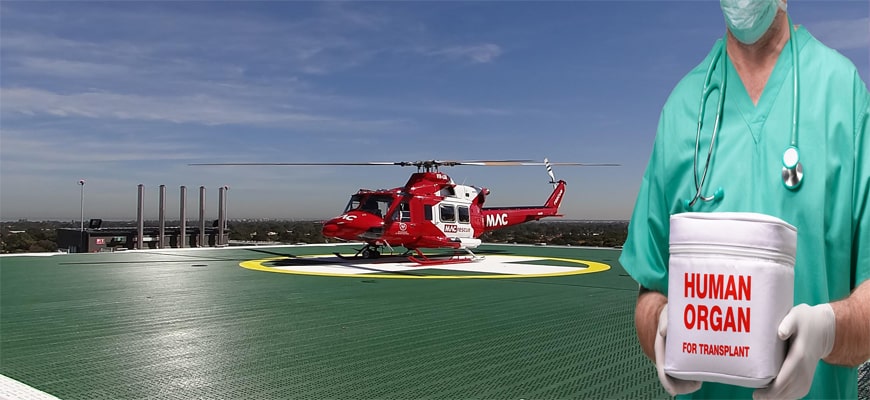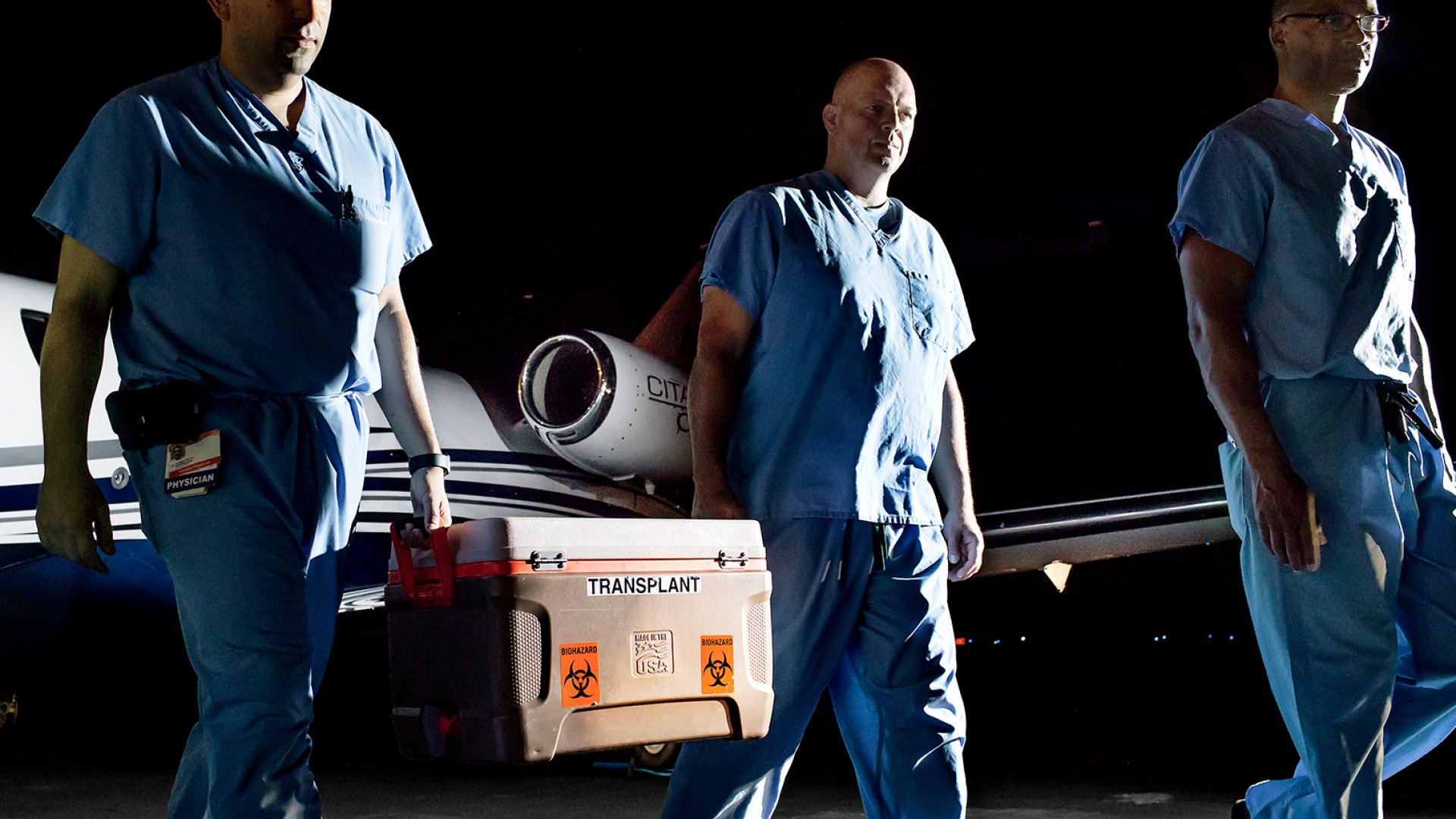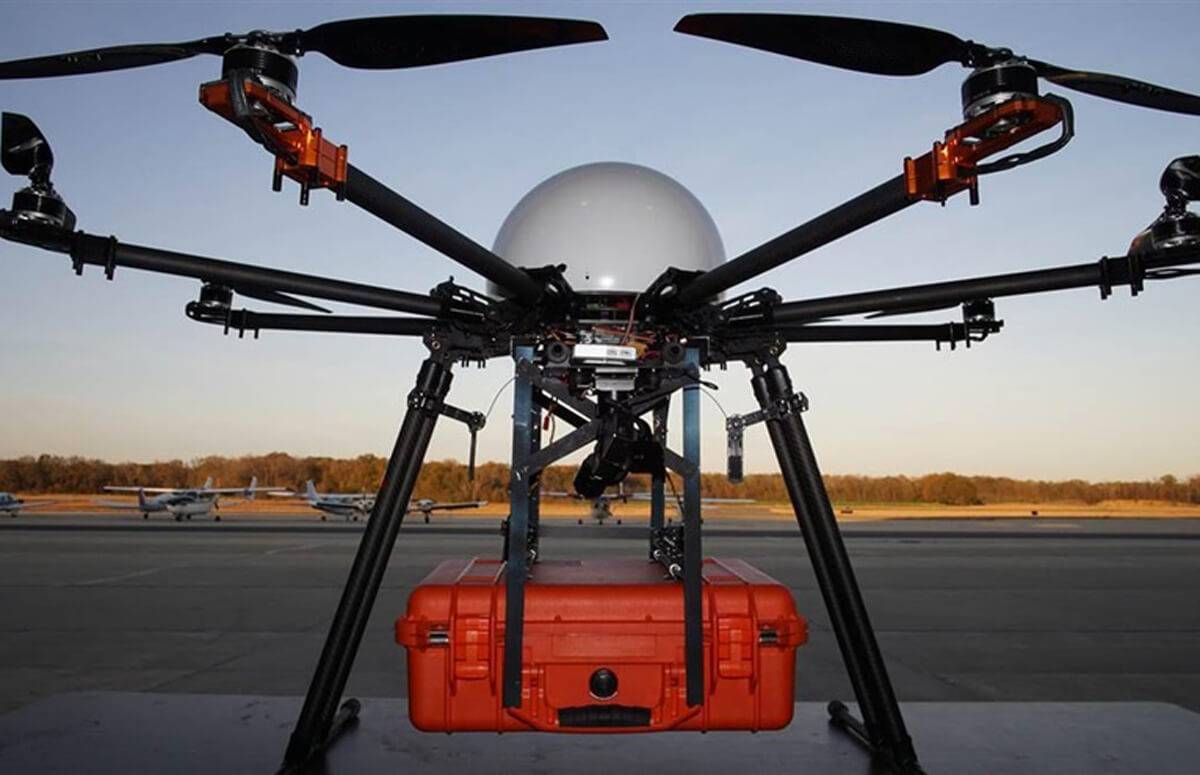Alright, let’s talk about the role of air ambulances in organ transplants, because this is some pretty fascinating stuff. Picture this: someone’s waiting for a life-saving organ transplant, and finally, a match is found. But here’s the catch: they live hundreds, maybe even thousands of miles away from the hospital where the transplant surgery will take place. That’s where air ambulances come into play. These incredible machines can fly at high speeds, making it possible to transport organs from one location to another in the shortest amount of time possible. It’s like having a medical superhero swoop in and save the day. So, let’s explore how air ambulances make these incredible organ transplants happen.

1. Background on Organ Transplants
Organ transplants have revolutionized the field of medicine, offering life-saving treatments for individuals suffering from organ failure. This medical procedure involves the transplantation of healthy organs, such as hearts, lungs, kidneys, and livers, from donors to recipients. Organ transplants offer a ray of hope to those in dire need, improving their quality of life and increasing their chances of survival.
However, organ transplantation is not without its challenges. The demand for organs far exceeds the available supply, leading to long waiting lists and, unfortunately, many patients losing their lives while waiting for a suitable donor. Additionally, the time sensitivity of organ transportation poses a significant obstacle, as organs can only survive for a limited period outside the human body. The transportation of organs also poses logistical challenges, with distance and transportation methods playing a crucial role in successful transplants.
2. Challenges in Organ Transplants
2.1 Organ Availability
One of the most significant challenges in organ transplants is the limited availability of organs. Organ donation rates are low, and many people die each year while waiting for a suitable donor organ. This scarcity stems from a combination of factors, including the complexities of organ donation and the need for suitable matches between donors and recipients.
2.2 Time Sensitivity
Time is of the essence when it comes to organ transplants. Once an organ becomes available, it must be transplanted into the recipient as quickly as possible to ensure its viability. Organs have a limited “cold ischemia time,” which refers to the time during which an organ can be preserved outside the body. This time frame varies depending on the organ but typically ranges from four to twenty-four hours. The urgency of organ transportation poses a significant challenge, particularly when the recipient and the donor are located far apart.
2.3 Distance and Transportation
The geographical distance between the donor and recipient can pose logistical challenges in organ transplantation. The transportation of organs requires a reliable and efficient method to ensure the organ’s safe arrival at the recipient’s location. Traditional transportation methods, such as ground ambulances, may not always be feasible, especially when long distances are involved or when time is limited. This is where air ambulances come into play.
3. Introduction to Air Ambulances
3.1 Definition and Purpose
An air ambulance, also known as an aeromedical transport, is a specialized aircraft equipped with medical equipment and staffed with medical professionals. Their primary purpose is to transport patients swiftly and safely, particularly in emergency situations where ground transportation is not suitable or feasible. Air ambulances offer a critical lifeline, providing speedy transport for patients requiring urgent medical attention.
3.2 Types of Air Ambulances
Air ambulances come in different types, each serving a specific purpose depending on the patient’s medical condition and urgency. The two main types of air ambulances are helicopter ambulances, often referred to as “helicopters of hope,” and fixed-wing ambulances, which include both turbo-prop and jet aircraft.
Helicopter ambulances are commonly used for emergency medical services within a limited range, such as transporting patients from accident scenes to hospitals. They provide rapid response times and can land in confined or remote areas, making them ideal for situations where time is critical.
On the other hand, fixed-wing ambulances, including turbo-prop and jet aircraft, are used for longer distance transfers, including inter-facility transfers and international repatriations. These aircraft offer greater speed and stability, and they can accommodate multiple medical professionals and advanced medical equipment, making them suitable for longer, more complex journeys.

4. Role of Air Ambulances in Organ Transplants
Air ambulances play a crucial role in the successful transportation of organs for transplant. Their ability to rapidly transport organs over long distances and their onboard medical capabilities make them an invaluable asset in the organ transplantation process.
When an organ becomes available, the transportation of that organ to the recipient’s location needs to be swift and efficient. Air ambulances provide a means to overcome distance limitations and time sensitivity. They can quickly transport organs from remote areas or across state or international boundaries, ensuring that the organ reaches the recipient in the best possible condition.
Moreover, air ambulances are equipped with specialized medical equipment and staffed with highly trained medical professionals who can monitor and preserve the organ during transport. This ensures that the organ remains viable and functional before the transplantation procedure.
5. Transportation of Organs
5.1 Speed and Efficiency
Speed and efficiency are critical factors in the transportation of organs for transplant. Air ambulances excel in providing swift transportation, minimizing the time between organ retrieval and transplantation. The ability to bypass traffic congestion and fly directly to the destination significantly reduces the transportation time compared to ground-based methods.
Air ambulances are capable of reaching speeds of up to 500 miles per hour, allowing for rapid transportation across varying distances. This speed is crucial in meeting the time sensitivity requirements of organ transportation and maximizing the chances of a successful transplant.
5.2 Preservation and Maintenance
Maintaining the viability of organs during transportation is essential for successful transplantation. Air ambulances are equipped with advanced medical equipment and specialized storage facilities that can maintain the organ’s optimal conditions throughout the journey. Temperature, oxygenation, and proper handling are critical factors in preserving the organ’s integrity during transportation, and air ambulances are equipped to meet these requirements.
Additionally, medical professionals onboard air ambulances are trained in organ preservation techniques and can provide immediate medical care to the organ if necessary. This ensures that the organ remains in the best possible condition, minimizing the risk of complications during the transplantation procedure.
5.3 Organ Packaging and Containers
Proper packaging and containers are essential for safe organ transportation. Air ambulances are equipped with specialized containers that provide an optimal environment for organ preservation and transport. These containers maintain a controlled temperature, protect the organ from physical damage, and minimize the risk of contamination.
The packaging and containers used in air ambulances are specifically designed to meet the unique requirements of organ transportation. They are often insulated and shock-absorbent, providing a protective barrier for the organ during the journey. This ensures that the organ arrives at its destination in the best possible condition, ready for successful transplantation.
6. Patient Transportation
6.1 Transporting Organ Recipients
In addition to transporting organs, air ambulances also play a vital role in transporting organ recipients. Once a suitable organ becomes available, it is crucial to transport the recipient quickly and safely to the hospital where the transplantation will take place. Air ambulances can provide seamless transportation for organ recipients, ensuring they arrive in a timely manner and ready for the procedure.
Air ambulances are equipped with the necessary medical equipment and staffed with highly trained medical professionals who can monitor the recipient’s condition throughout the journey. This continuous care ensures the recipient’s stability and allows for immediate intervention if any complications arise during transport.
6.2 Transporting Organ Donors
In the case of living organ donation, air ambulances may also be involved in transporting organ donors. Living organ donation often requires a coordinated effort between medical teams in different locations, and air ambulances can facilitate the transportation process.
Air ambulances provide a convenient and efficient means of transporting living organ donors from one hospital to another, ensuring they reach the recipient’s hospital in a timely manner. The medical staff onboard can provide necessary medical interventions during transport and ensure the donor’s safety and well-being throughout the journey.
7. Ensuring Safety and Care
7.1 Medical Staff and Equipment
Safety and care are of utmost importance during organ transportation, and air ambulances prioritize both aspects. These aircraft are staffed with highly skilled medical professionals who specialize in critical care and emergency medicine. These dedicated medical teams are equipped with advanced medical equipment that allows them to monitor the organ’s condition and respond promptly to any changes or emergencies.
The medical staff onboard air ambulances undergo comprehensive training and are experienced in managing critical patients and performing life-saving interventions. Their expertise, combined with the advanced equipment available on board, ensures that the highest level of medical care is provided during organ transport.
7.2 Monitoring and Life Support
Air ambulances are equipped with state-of-the-art monitoring and life support systems that enable continuous monitoring of vital signs and organ functionality throughout the journey. These systems provide real-time data to the medical team, allowing them to detect and respond to any potential issues promptly.
In addition to vital sign monitoring, air ambulances are equipped with life support equipment such as ventilators, cardiac monitors, and defibrillators. These devices ensure that any medical emergencies or complications can be managed effectively, minimizing the risk to the organ and the patient during transport.
7.3 Critical Care during Transportation
Organ transportation often involves critically ill patients who require continuous care and management. Air ambulances are designed and equipped to provide critical care services, including administering medications, managing pain, and stabilizing patients during transport.
The medical professionals on board air ambulances are trained to handle medical emergencies and have the necessary expertise to manage critical patients. They can make informed decisions and provide appropriate interventions, ensuring the patient’s stability and well-being en route to the transplantation facility.
8. Collaboration with Medical Facilities and Teams
Air ambulances play a crucial role in collaborating with medical facilities and teams involved in organ transplantation. They work closely with transplant centers, hospitals, and organ procurement organizations to ensure a seamless and coordinated approach to organ transportation.
Air ambulance providers maintain close relationships with these medical facilities, allowing for effective communication and coordination. This collaboration ensures that all the necessary preparations, including flight clearances, ground transportation arrangements, and proper documentation, are in place before the organ transportation process begins.
9. Regulations and Guidelines
9.1 Air Ambulance Certifications
Air ambulance providers must adhere to strict regulations and guidelines to ensure safe and reliable transportation. These guidelines encompass aircraft maintenance, medical equipment standards, and staff training and certifications.
Certifications such as CAMTS (Commission on Accreditation of Medical Transport Systems) and EURAMI (European Aero-Medical Institute) indicate that air ambulance providers meet stringent quality standards. These certifications provide reassurance to patients, medical facilities, and the general public that the air ambulance service meets the highest levels of safety and care.
9.2 Licensing and Training
Pilots and medical staff working in air ambulances must hold the necessary licenses and certifications to operate in a medical transport capacity. Pilots undergo rigorous training specific to air ambulance operations, including advanced instrument flight training and emergency procedures.
Medical staff working in air ambulances, such as nurses, paramedics, and physicians, also undergo specialized training to ensure they are equipped with the skills and knowledge required for critical care during transport. This training includes medical emergencies unique to air transport, stabilization techniques in the air, and the use of specialized equipment.
9.3 Organ Transportation Regulations
The transportation of organs for transplant is subject to specific regulations and guidelines to ensure the safety and ethical practices involved. These regulations often vary by jurisdiction but generally focus on preserving the organ’s viability, ensuring proper documentation and consent, and minimizing the risk to the patients and medical professionals involved.
Air ambulances operating in the organ transportation field must comply with these regulations, ensuring that all necessary permits and approvals are obtained before each transport. This compliance ensures that the transportation process is conducted ethically, safely, and legally.

10. Cost Considerations
10.1 Factors Affecting Costs
The cost of utilizing air ambulances for organ transportation can vary depending on several factors. Distance, urgency, type of aircraft required, and the level of medical care needed are all considerations that can influence the cost.
Longer distances or international transfers may require larger aircraft with greater fuel consumption, resulting in higher costs. Similarly, organ transportation that involves multiple medical professionals or specialized medical equipment may also lead to increased costs.
It is crucial to note that while air ambulance services can be expensive, they provide a vital lifeline in the organ transplantation process. The cost reflects the specialized services, advanced medical equipment, and highly skilled medical staff required to ensure the safe and timely transport of organs and patients.
10.2 Insurance Coverage
It is essential to check with insurance providers regarding coverage for air ambulance services. Many insurance plans cover air ambulance transportation in cases of medical necessity, including organ transplants, although specific coverage and limitations may apply.
When considering the potential need for air ambulance services, individuals should review their insurance policy to understand the extent of coverage provided. It is advisable to contact the insurance provider directly to discuss coverage details and any potential out-of-pocket expenses associated with air ambulance transports.
In conclusion, air ambulances play a vital role in organ transplantation, addressing the challenges of organ availability, time sensitivity, distance, and transportation. These specialized aircraft and their highly trained medical teams enable the rapid, safe, and efficient transportation of organs and patients, ensuring the best chances of successful transplant procedures. Compliance with regulations, collaboration with medical facilities, and the dedication to safety and care make air ambulances indispensable in the complex field of organ transplantation.



